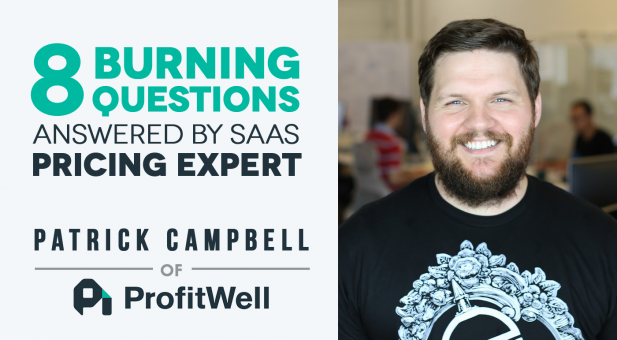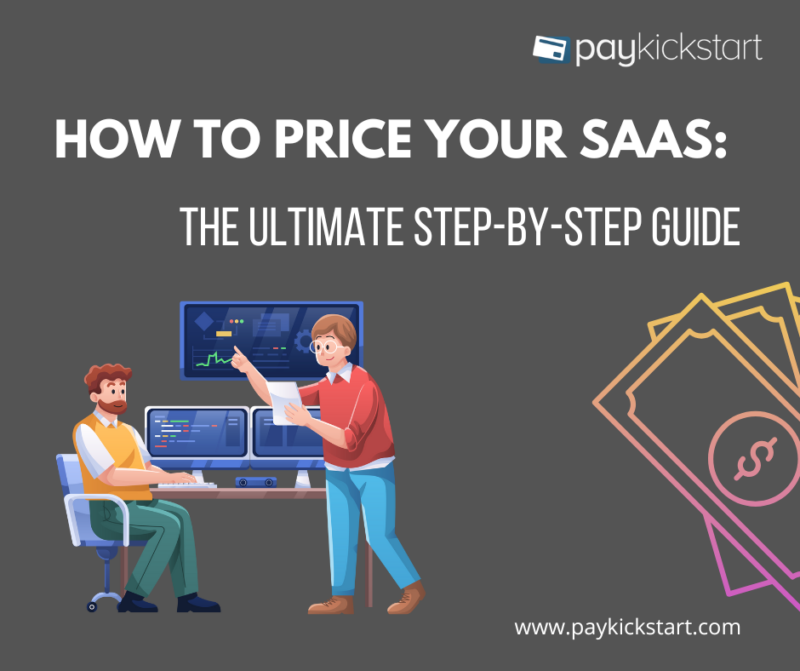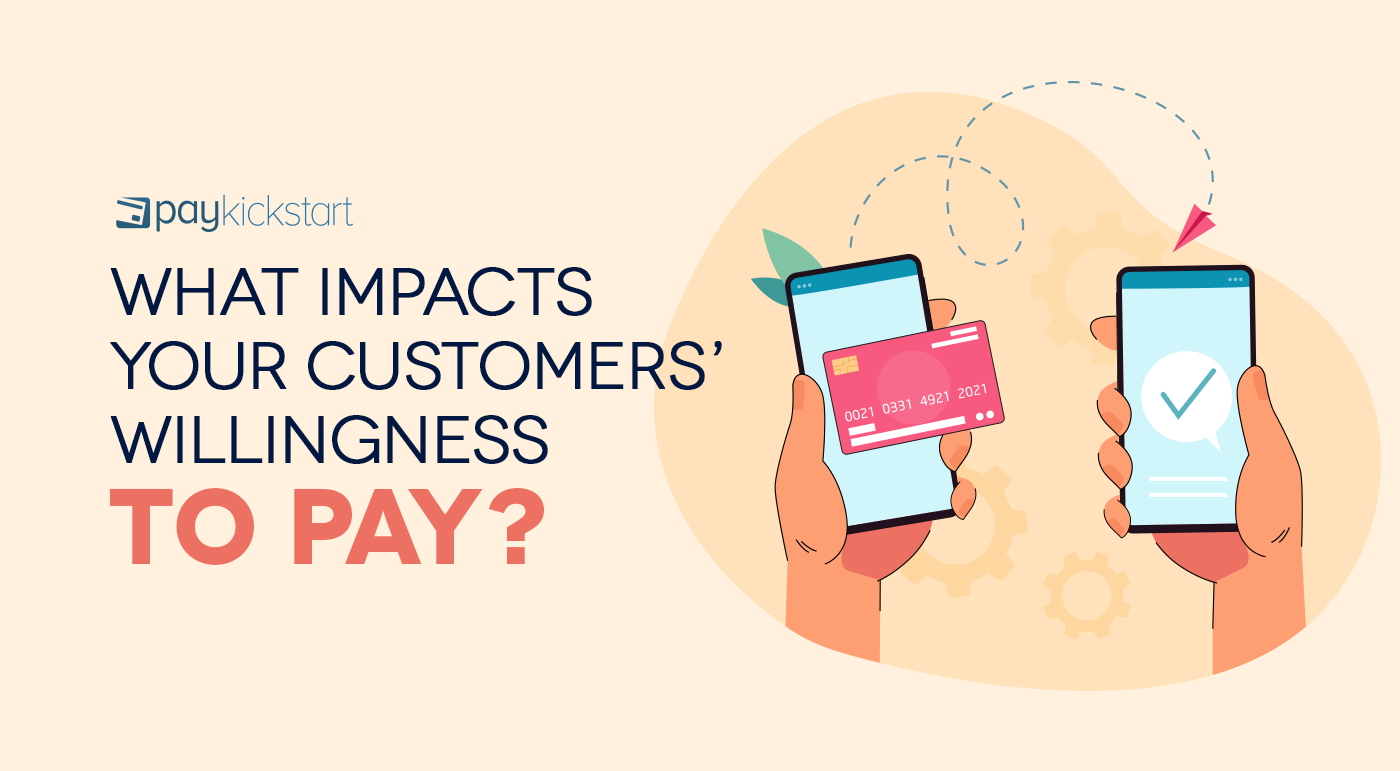Subscription growth hack (by PayKickstart)
Facebook Group - 3,932 members
Visit Group
If you are a SaaS owner, or someone who is part of a team, you’ve probably already heard about Pat Campbell, and if you haven’t, you should!
He’s the owner of ProfitWell, a blog that offers products and services that help reduce churn, increase revenue and overall profitability of SaaS companies.
Not only do they offer great products used by Vice, Autodesk, meetup and Canva (just to name a few), but they have a great blog and podcast that offers valuable insights and interviews with successful people in the industry!
We decided to ask Pat some questions about the current state of SaaS in a pandemic era, and get some insights into some important questions that may be on your mind. They were definitely on ours…
Luckily, he sat down and took the time to speak with us!
Here are the questions we asked him, and his insights…
So interestingly enough, the pandemic did not impact SaaS that much, at least not negatively.
The SaaS market actually grew quicker and higher in 2020 than it did in 2019, and this came from the resiliency of SaaS, and it also came from a lot of movement to SaaS and some accelerated trends.
So to be clear, obviously those individuals serving customers that basically had anything to do with going outside: POS systems, restaurants etc… they were affected, and a good number of them came back and adjusted their strategy, but they did not have a banner year.
And then obviously companies like Slack and the remote work crowd, those companies did really, really well.
But for most of us, we were in the middle, and barring the first three weeks of the work from home right there in march of 2020, when everyone was re-evaluating all the products they were using, there wasn’t much else that really ended up affecting us.
Except for kind of an acceleration of moving towards not only the world of some sort of SaaS product, but also keep in mind the cost structure. You know, unlike other software, you pay a lower amount on a monthly basis, so people were basically able to hedge some of their purchases, which all benefited us!
Now going into 2021, and kind of the near future, I think there’s going to be a need for retaining these customers that we gain, because I think we got better at retention as an industry, but we’re still not where we need to be…
But I also think going into 2021 and beyond, we’re going to need to focus a lot more on a world where some of the traditional channels that we would use, events, these types of things, are going to be hybrid, or not as valuable, or people are going to be spread out more.
So there are just some things to think about, but this is just the evolution of the market in general, it just happened in a year rather than in 10 years.
Key points:
2. What do you think is a key shift SaaS companies need to do right now in the pandemic economy? Are there any shifts needed, or does business seem prosperous?
That’s a good question.
I think there’s really 3 things here. I think the first one is that SaaS companies need to shore up their retention.
Switching costs are going to decrease rapidly, the ability to switch is going to increase, and there’s just going to be more and more investment put into our world, which is great, but ultimately this whole concept of making sure you are providing value to your customer is just going continue to be true, and just continue to accelerate.
So getting your retention in order, and making sure your customers are on the right path is going to be the biggest thing.
I think the second piece which is very similar to that, is we need to make sure that we are pricing based on the value that we are providing.
Because there’s more competition, and because tastes and interests are changing so much, the world of pricing willy nilly and not based on the actual value you are providing, that world is basically coming to an end.
So getting your value and your pricing metric makes the most sense.
And the third thing is really understanding how you should structure your team, and what your remote policy should be, if any.
I think a lot of people are like, “lets just go remote”, because they’re looking at their balance sheet.
But at the end of the day, it’s gonna be one of those things where we’re not thinking through the unintended consequences of collaboration, burnout, and all of these different things that go into making sure that you ultimately, are hiring the right kind of folks and pushing things forward.
So I think that those are the three big things. I do think that business is going to continue to be prosperous, but your job is to accelerate that growth, not just get that reactive growth.
Key points:
3. What do you think is an underused lead generation strategy that many SaaS companies are ignoring?
I think media strategy.
So a lot of us are using content marketing, kind of traditional inbound marketing, but the problem is there’s just so much density in the market, that everyone’s kind of responded to increasing the quality and the quantity of the content that they are producing.
The problem is that you’re just gonna continue to get the same results, and the effectiveness of those results are gonna go down over time, just by the nature of everyone being in the market.
So, what we did a few years ago was we looked at building a new system which was basically a media strategy. Now for media strategy, the difference is that instead of building an offer and then driving people to that offer, you’re building an audience of some sort, through a podcast, a show, a series, a whole host of things.
But that’s the big thing that I think a lot of people need to shift towards, it’s ultimately this media strategy, and to think about building audiences rather than just leads.
And the payoff is kind of interesting, because you get substantially better leads per week and visits per week, but you also get into a situation where you get much much better cost ROI, because the season of a show that we’ve learned, can basically cost the same amount as an ebook.
So I think that’s the most underutilized thing for a lot of SaaS companies, it’s building that brand and pushing that brand forward.
Key points:
4. Freemium as in free trials with and without requiring credit card upfront, or no free trials? Some companies get confused about which strategy to implement, especially start-ups, so what do you think is a key factor to make an effective decision regarding these pricing models?
So I think that the first thing with freemium is you shouldn’t think of it as part of your pricing.
Technically it is, but you should think of it more as an acquisition strategy, right?
I often say freemium is an acquisition model, not a revenue model. The reason for that, is that you need to think of freemium more as an ebook, or a premium ebook, than anything else.
In freemium you’re opening the top up of the funnel, by using the best content you have, which is your product, and you’re using it in some particular manner to open up the lead sources there, and ultimately give people a taste.
The reason freemium is so effective is that it tends to put the onus of conversion on the user, rather than putting the onus of conversion on some false time box.
For example, that user comes in, they might use the product for 3 or 4 months, then becomes a really good lead.
Or they’re a really good lead, they come in, and they use whatever the limit is on the free plan within 14 to 21 days, like a faux free trial, and then all of a sudden they convert.
Now what’s beautiful about this, is that when you put the onus of conversion on the user, rather than on some artificial time horizon, you tend to see that NPS (Net promoter score) is much better for those customers who convert from freemium, as it’s typically about double, versus those who convert from kind of a cold start.
CAC is down by about 30%, because you are not doing pushy type sales, and you are pulling them into your paid plans.
You also have some implications around retention. The users typically retain at about 20% higher rate than those who converted without a freemium plan, and this is because they already have familiarity with the product, and you ultimately have a situation where you can get higher willingness to pay expectations, because there’s a bit of a reciprocity thats built up.
And so, I’m a big fan of freemium! I used to be very against freemium, but I think the thing we have to think about is, do you know how to convert leads into customers? If you don’t know how to do that, and you don’t have some actual market place reasoning that you need freemium, you should wait, because again you’re opening up that top of the funnel.
Key points:
5. What’s a common upselling mistake you often see in SaaS subscription models?
Not having an upselling reason in the first place. There are two underused pricing elements for a SaaS company. One is value metrics, which I talked about a little bit before, and what’s powerful about value metrics is that they essentially will allow the upgrade to happen naturally.
So all of a sudden I start using more users, I understand I’m going to have to have to pay for those users, and it’s not like you have to convince me to buy this next plan because it has some cool feature that I may or may not need, it’s just a simple conversation of ‘’oh, you’re using more? Great, we’re gonna put you on the next plan. Congrats, you must be growing!”, and it’s a really easy upgrade situation.
The other thing is addons, like not having an addon strategy. You work so hard to get these users, you should monetize them more than just the simple new revenue you’re getting, and that’s what makes it super powerful.
Key points:
6. What are your thoughts on Event-based billing (Usage-based billing)? Here to stay, or just a passing fad?
Event-based billing is basically where the world is going; I don’t think it’s a passing fad.
If you think about it, we were constricted by how we could charge during the past 20 years by our billing systems.
We didn’t have a way to charge someone on a recurring basis, let alone for how many seats they have, or whatever they’re using. So I think that as billing technology has evolved, we’re headed to a place where event-based billing is possible, mainly because we can measure things, and then we can charge based on those measurements, whether it’s per 100 visits, per 1000 whatevers, per seat, or whatever it ends up being.
Now, I think that if you look at developper products, or dev focused products, you’re seeing a ton of people use event-based billing in general, but I think the issue is I don’t know if consumers are ready for this quite yet…
I think that consumers are not quite ready to pay per squeeze of toothpaste, right? That seems a little weird. But, there’s plenty of products where you’re willing to pay based on your usage, it just depends on the context.
Will we get to a place where people will want to pay per squeeze of toothpaste, either metaphorically or actually? I’m not sure, but we can at least charge based on the bundle of those squeezes if you will, so you get 100 squeezes per X amount of dollars, and it’s kind of in a more traditional subscription rather than a kind of nickel and dime effect.
So time will tell. It’s here to stay, it’s just how it’s packaged that’s ultimately going to be the big question over time.
Key points:
7. As there are some SaaS companies that may see varying growth in different quarters, what are a few ways you suggest to onboard, and acquire subscribers during slow months? Or during these slow months, should these SaaS companies focus on their expansion revenue versus acquiring new customers?
Expansion revenue is always a really important thing, I think that’s a big thing that’s super powerful, and I don’t think enough people are doing enough expansion revenue, just in general as I said in the other question.
I do think that the thing you’ve gotta think about is why are those months slow?
If those months are slow, because you just have episodic products, you know if you’re an ecommerce type product, you’re gonna see the most people come to you probably in the holiday months, versus outside of it. That might just be baked into the cake; there’s nothing you can do, right?
Now there’s some things you can do around changing up your strategy, changing up how you sell, what you sell, who you sell to, but ultimately I think you have to understand why they’re slow. Now if it’s just slow because, you know, common seasonality like people are on vacation or something like that, then I think what you want to do is you want to look at that and understand, well, who isn’t on vacation right now? Could we sell to them?
Or is there something that we could sell that could create some of that urgency?
So one thing that we like to do, and it’s a nice little tip, is during the thanksgiving months, and the thanksgiving week in the states, what we will do is actually create campaigns that go beyond just the states. There’s a bunch of things you could do, but it really starts with why?
That’s the biggest thing.
Key points:
8. What are some things payment processors (and SaaS companies in general) often miss when dealing with delinquent customers?
Yeah, so delinquent customers, these are folks who stop paying you essentially. Most of the time because their credit or debit card has failed, and for a whole host of reasons.
There are 130 reasons why a credit card fails, and oftentimes you have to go out and get updated payment information. So, I think long story short, what they miss when dealing with delinquent customers is, one, you have to often go ask people for updated payment information, and in that respect, you have to remember that these are your customers, not just random people!
So don’t have bill collector type emails. Make sure you’re going out and asking them, you know, in a nice way and not blaming them and saying “Hey we’re gonna break your legs unless…” you know that type of mindset. You’d be surprised at how bad these emails are! So first thing remember that these are your customers.
And the second big thing is, you know like I said, making sure you’re going out and treating these folks as a marketing channel, because oftentimes your customers don’t even know their payment failed.
And the third thing I would say, is making sure that you ultimately are treating this as something that you’re testing over time and taking seriously, because it is the largest single bucket of lost customers.
About 20-40% of all lost customers are from payment failures, and this is assuming that you’re a credit or debit card based business. If you’re an invoice based business it’s a bit lower, but the big thing to keep in mind is that you’ve got to take this seriously, and it’s not something that is simply solved by just willing it away. You’ve gotta actually implement some things to fix it, so that’s what I’d say.
Key points:
Those were some really great insights! Hopefully you got some really valuable lessons from what Pat said, and you are getting ideas on what the next best move is for your business.The world has definitely changed over the last year, but we have shown that adaptability is possible. The software industry is only growing, and this pandemic has sped up the process of what was inevitably going to happen, so now is our time to capitalize on it.
Plan ahead, care for your customer, and charge what you are worth…
Hi, my name is Ryan from Higherdesirecopywriter.com! I write effective content and copy for B2B SaaS companies. I do blog posts/articles, website copy, and make engaging content for readers that truly draws them into your software and company. SaaS, eCommerce, CRO, and inbound marketing are my passions!
Read More About Ryan Desantis
